Abstract
In May 1992, 81 bacteriologically confirmed cases of typhoid fever (TF) were identified in all districts of Tabuk City in northwestern Saudi Arabia. Attack rates (AR) in residential districts ranged from 0.9-10.3 per 10,000. Confirmed cases included 9 workers in the city's referral hospital, King Khalid Hospital (AR 140/10,000), 2 in families of medical staff, 57 in the community (AR 4.4/10,000) and 13 in a local military cantonment (AR 0.8/10,000). The outbreak began with the onset of TF in the three areas within 5 days, continued for 7 weeks, and ended 2 weeks after chlorination began. Among water sources, the odds ratio (OR) was highest (2.6; 95% confidence interval [CI] 1.25-5.39) for water purchased from reverse osmosis (RO) plants, especially RO plants supplied by one well (ASUW) (OR = 7.05; 95% CI 2.51-20.7). The aquifer for ASUW lay partially beneath a depression where city sewage collected. Unchlorinated water samples from ASUW 1 month after the outbreak ended yielded coliforms. ASUW probably became contaminated with Salmonella typhi when KKH demand overtaxed the aquifer and drew in surface water. Membranes in RO plants using this unchlorinated well water could then become fouled with S. typhi. RO plants, which are common throughout Saudi Arabia, need close monitoring. Water for RO must be prechlorinated to prevent microbiologic fouling of the membranes.
Full text
PDF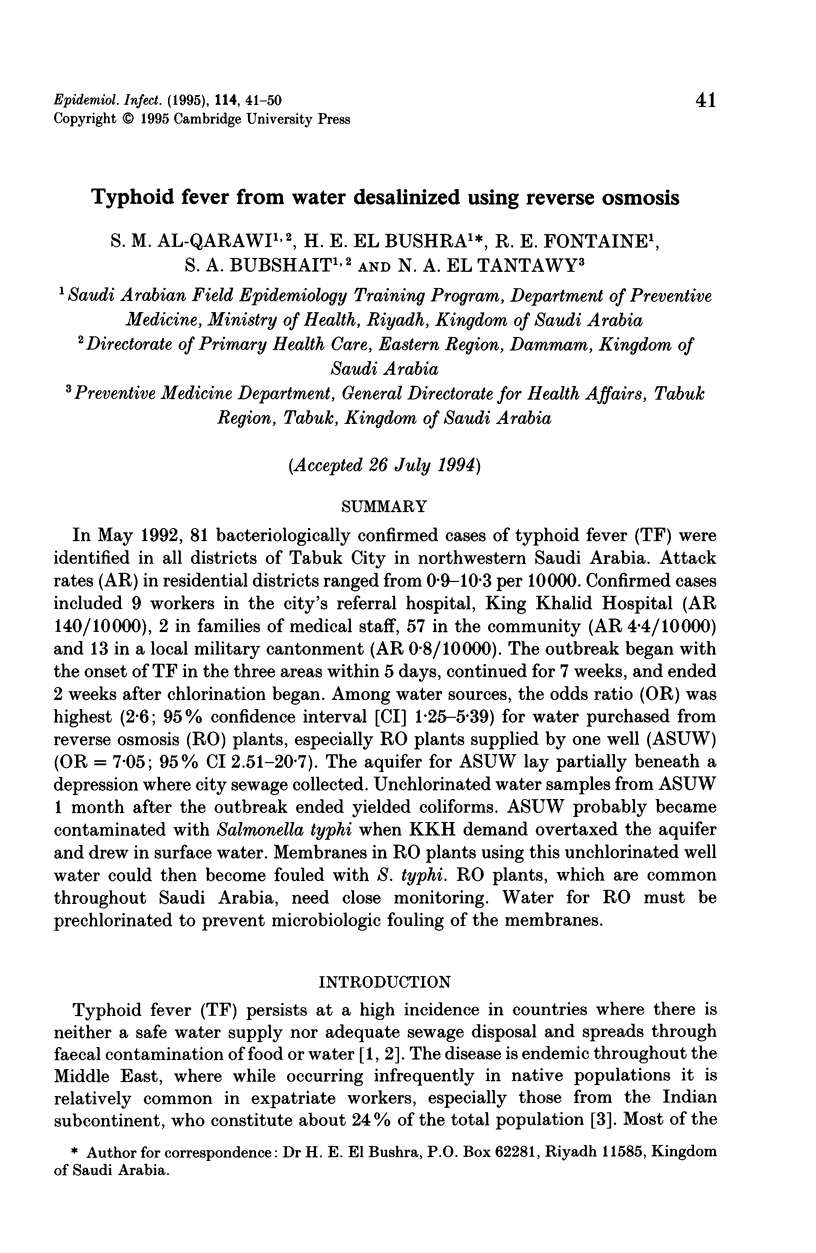
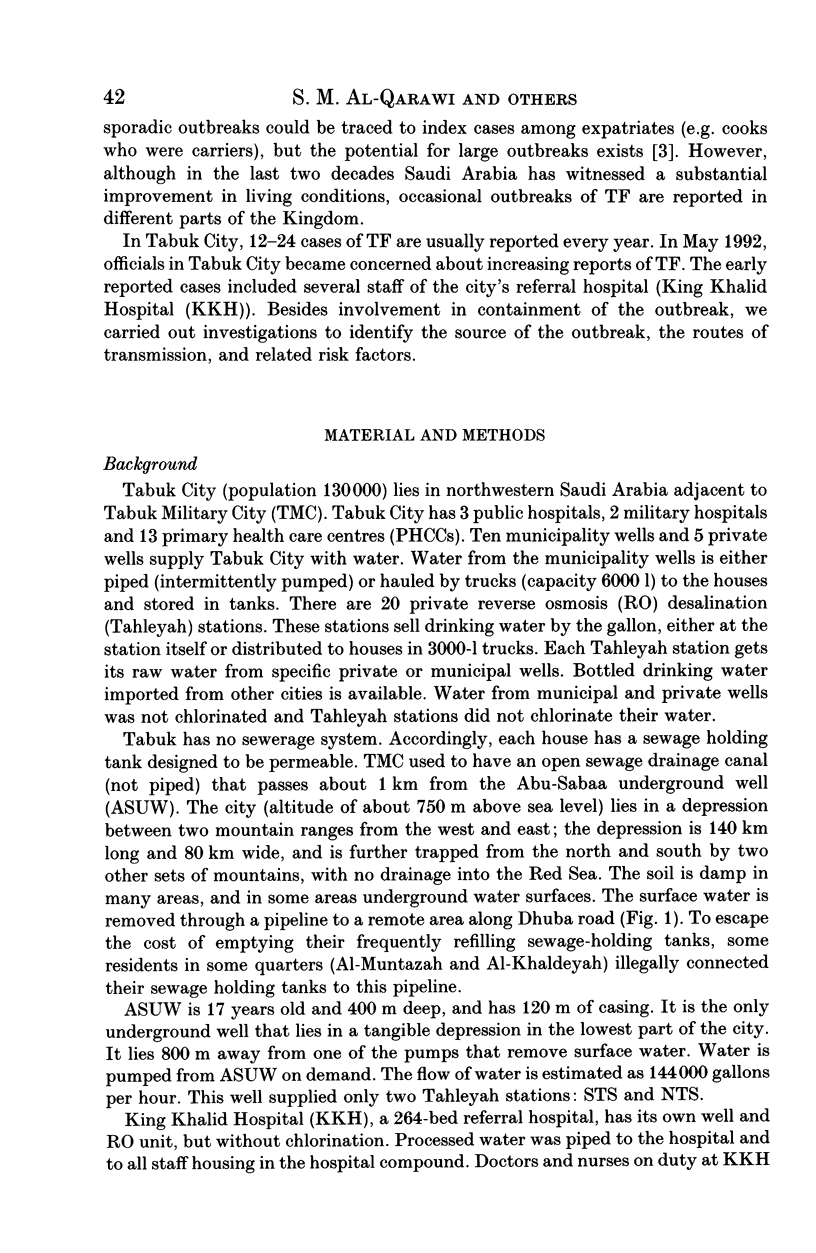
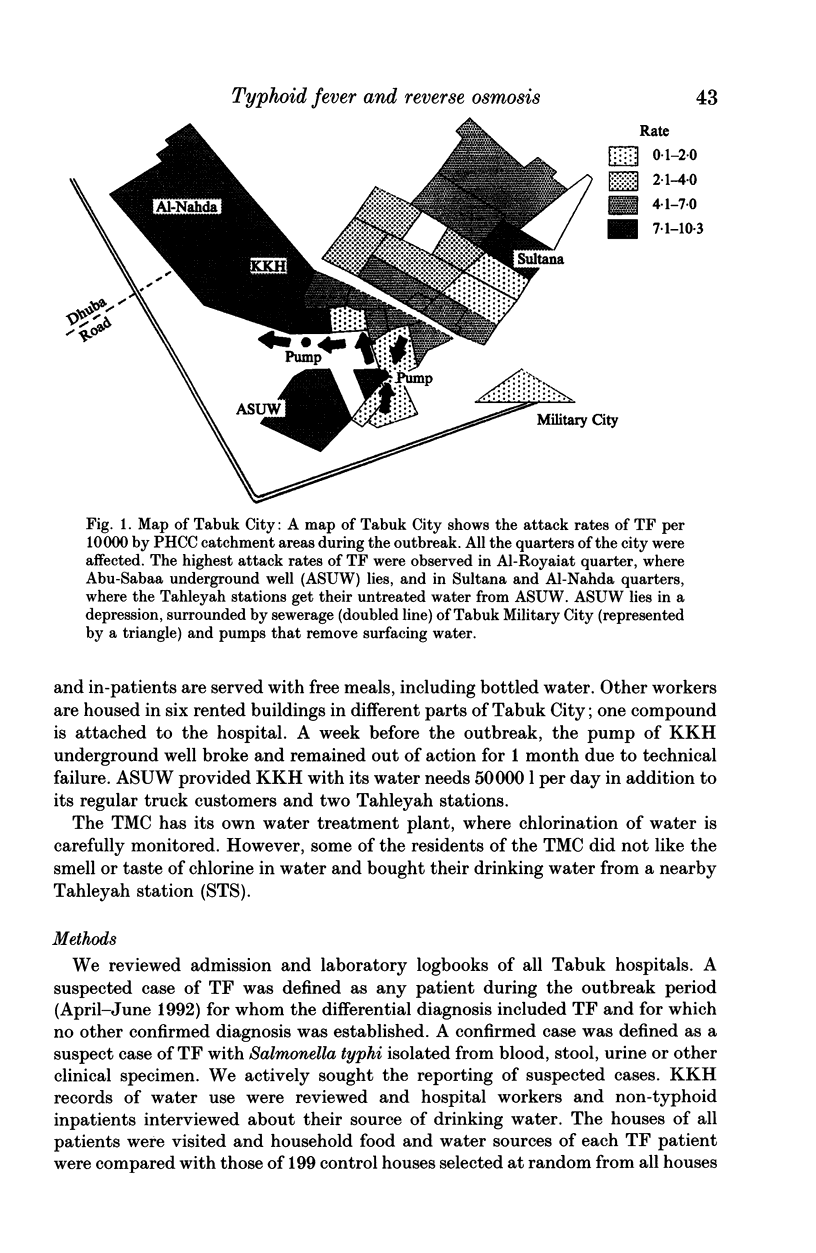
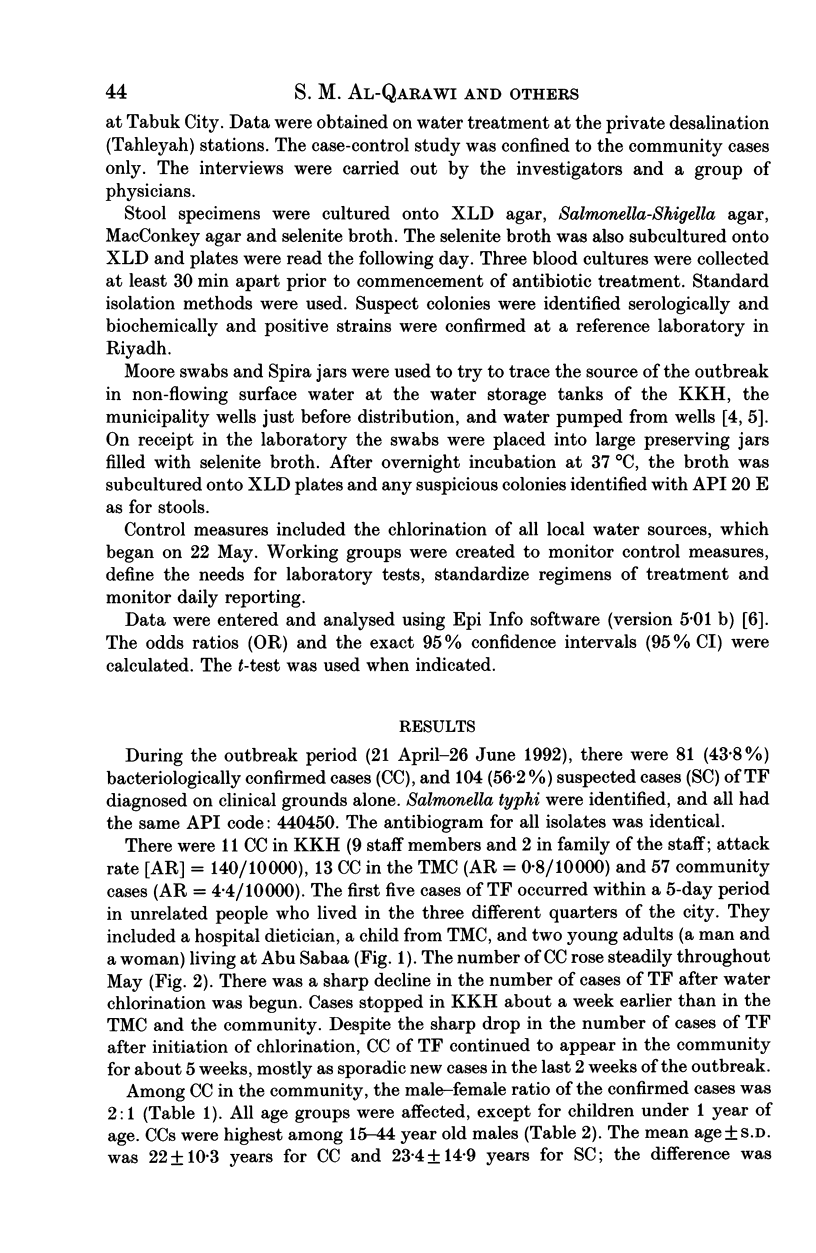
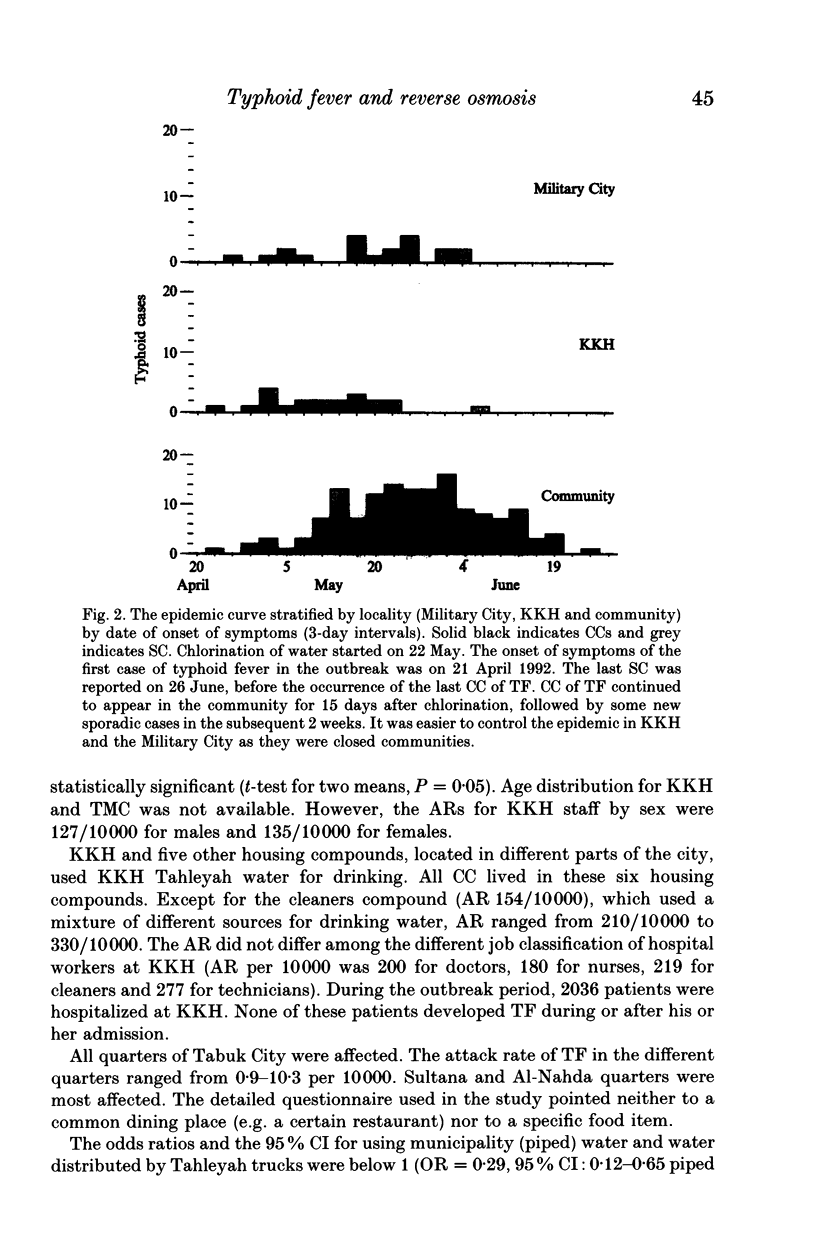
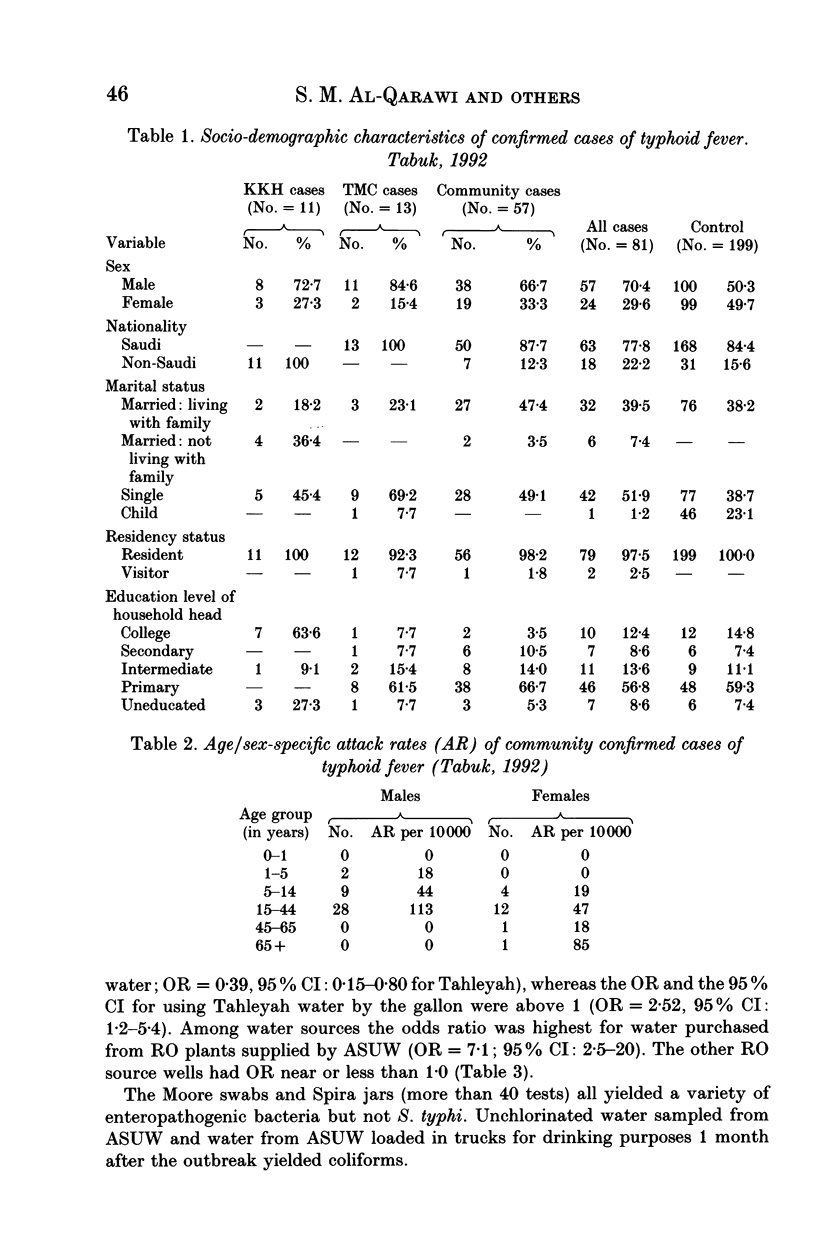
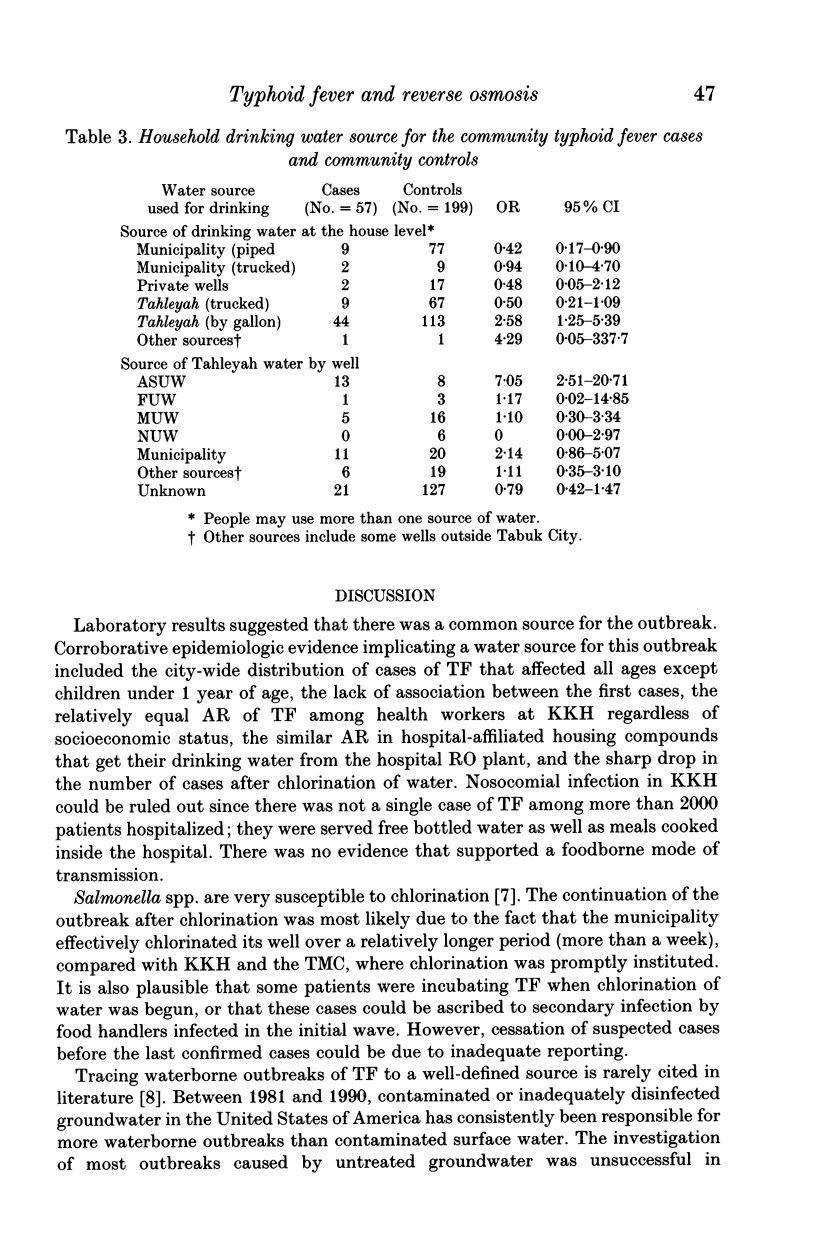
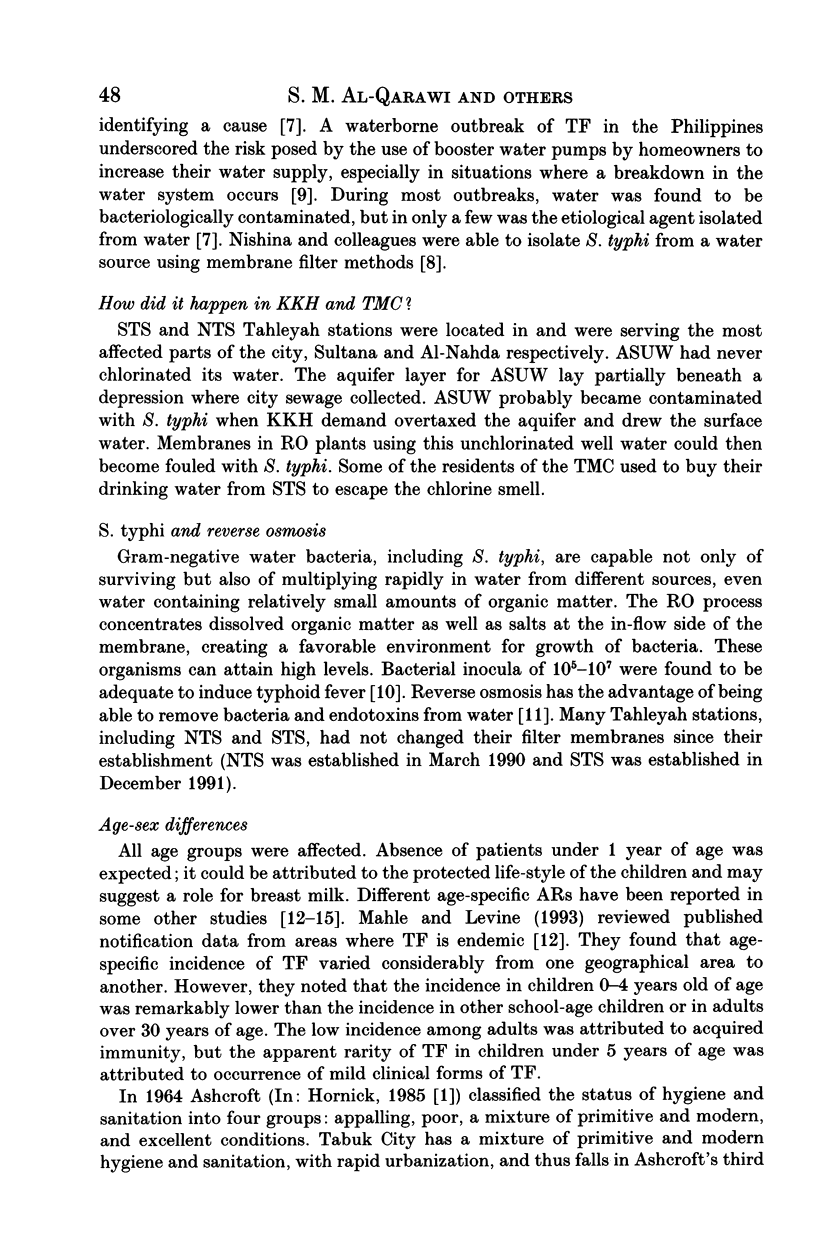
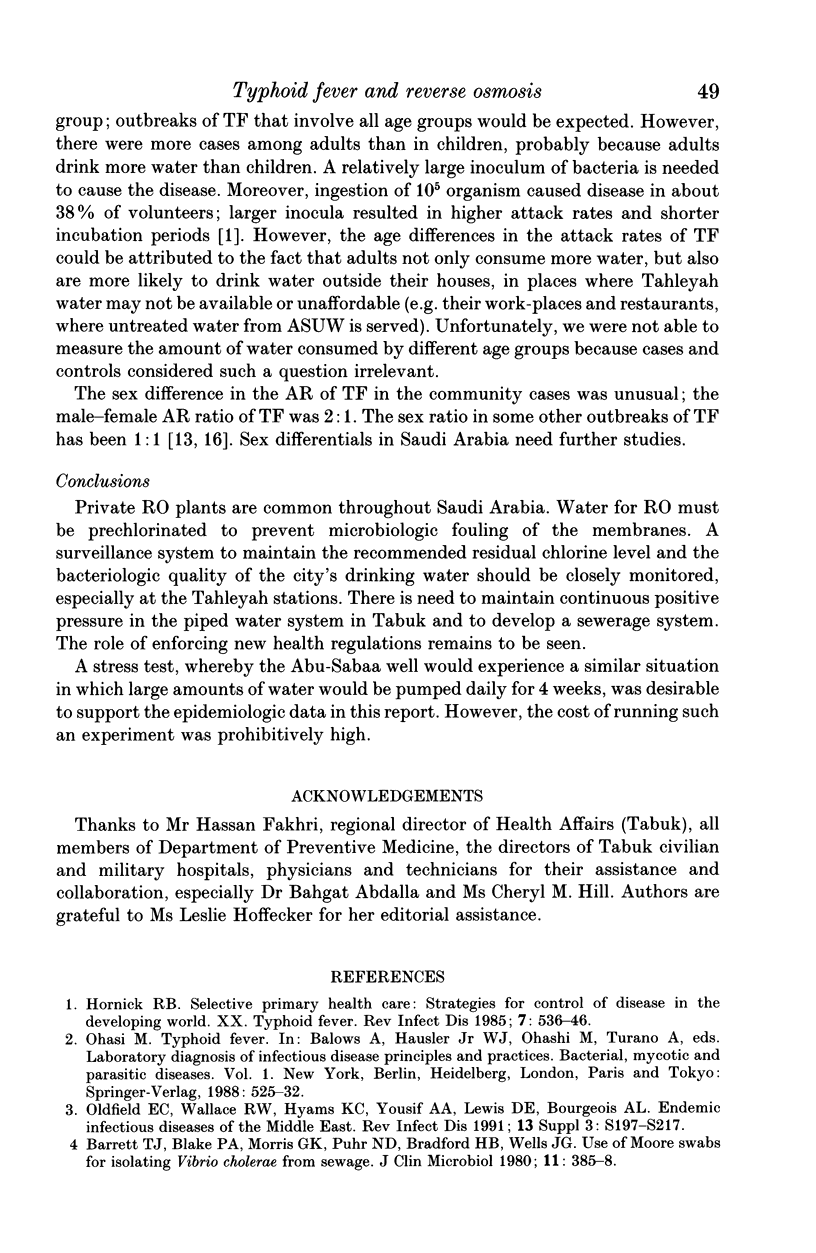
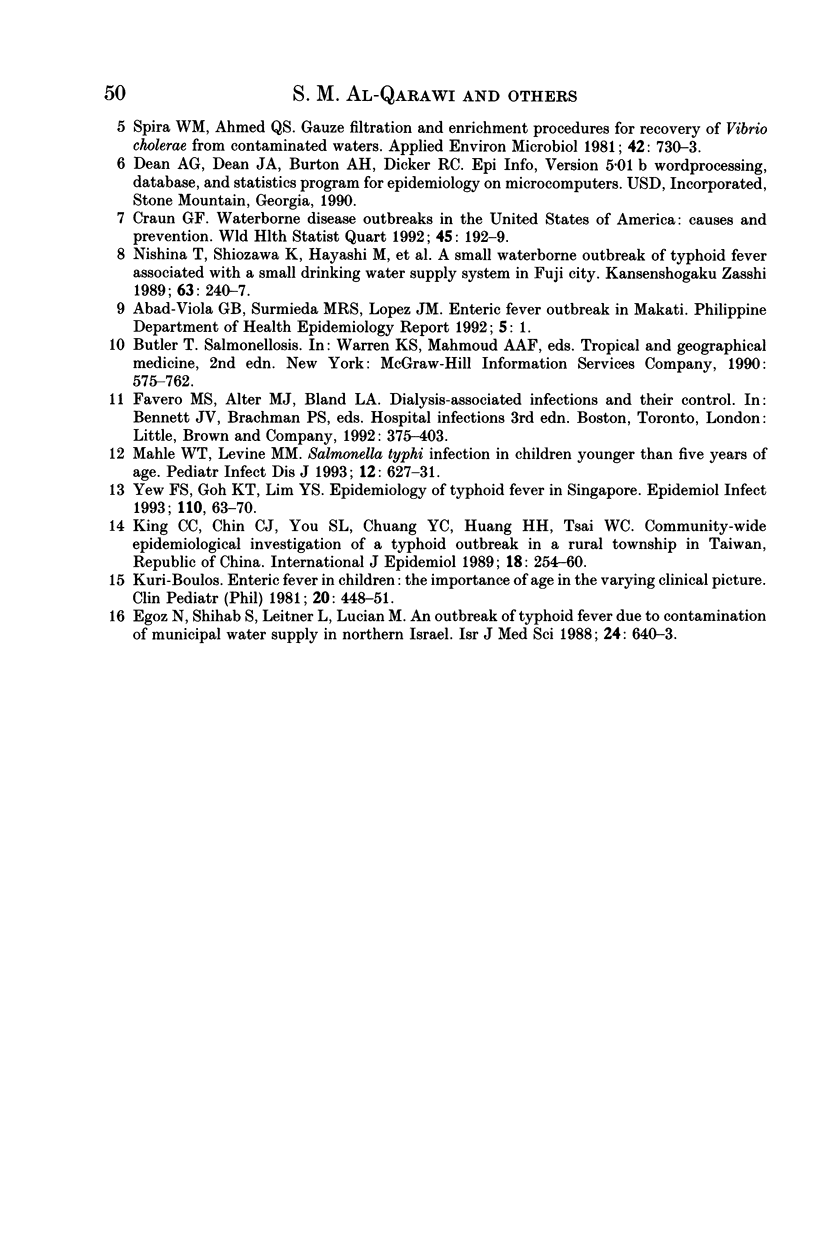
Images in this article
Selected References
These references are in PubMed. This may not be the complete list of references from this article.
- Barrett T. J., Blake P. A., Morris G. K., Puhr N. D., Bradford H. B., Wells J. G. Use of Moore swabs for isolating Vibrio cholerae from sewage. J Clin Microbiol. 1980 Apr;11(4):385–388. doi: 10.1128/jcm.11.4.385-388.1980. [DOI] [PMC free article] [PubMed] [Google Scholar]
- Egoz N., Shihab S., Leitner L., Lucian M. An outbreak of typhoid fever due to contamination of the municipal water supply in northern Israel. Isr J Med Sci. 1988 Nov;24(11):640–643. [PubMed] [Google Scholar]
- Hornick R. B. Selective primary health care: strategies for control of disease in the developing world. XX. Typhoid fever. Rev Infect Dis. 1985 Jul-Aug;7(4):536–546. doi: 10.1093/clinids/7.4.536. [DOI] [PubMed] [Google Scholar]
- King C. C., Chen C. J., You S. L., Chuang Y. C., Huang H. H., Tsai W. C. Community-wide epidemiological investigation of a typhoid outbreak in a rural township in Taiwan, Republic of China. Int J Epidemiol. 1989 Mar;18(1):254–260. doi: 10.1093/ije/18.1.254. [DOI] [PubMed] [Google Scholar]
- Mahle W. T., Levine M. M. Salmonella typhi infection in children younger than five years of age. Pediatr Infect Dis J. 1993 Aug;12(8):627–631. doi: 10.1097/00006454-199308000-00001. [DOI] [PubMed] [Google Scholar]
- Nishina T., Shiozawa K., Hayashi M., Akiyama M., Sahara K., Miwa N., Nakatsugawa S., Murakami M., Nakamura A. [A waterborne outbreak of typhoid fever associated with a small drinking water supply system in Fuji city]. Kansenshogaku Zasshi. 1989 Mar;63(3):240–247. doi: 10.11150/kansenshogakuzasshi1970.63.240. [DOI] [PubMed] [Google Scholar]
- Oldfield E. C., 3rd, Wallace M. R., Hyams K. C., Yousif A. A., Lewis D. E., Bourgeois A. L. Endemic infectious diseases of the Middle East. Rev Infect Dis. 1991 Jan-Feb;13 (Suppl 3):S199–S217. doi: 10.1093/clind/13.supplement_3.s199. [DOI] [PubMed] [Google Scholar]
- Spira W. M., Ahmed Q. S. Gauze filtration and enrichment procedures for recovery of Vibrio cholerae from contaminated waters. Appl Environ Microbiol. 1981 Oct;42(4):730–733. doi: 10.1128/aem.42.4.730-733.1981. [DOI] [PMC free article] [PubMed] [Google Scholar]
- Yew F. S., Goh K. T., Lim Y. S. Epidemiology of typhoid fever in Singapore. Epidemiol Infect. 1993 Feb;110(1):63–70. doi: 10.1017/s0950268800050688. [DOI] [PMC free article] [PubMed] [Google Scholar]



